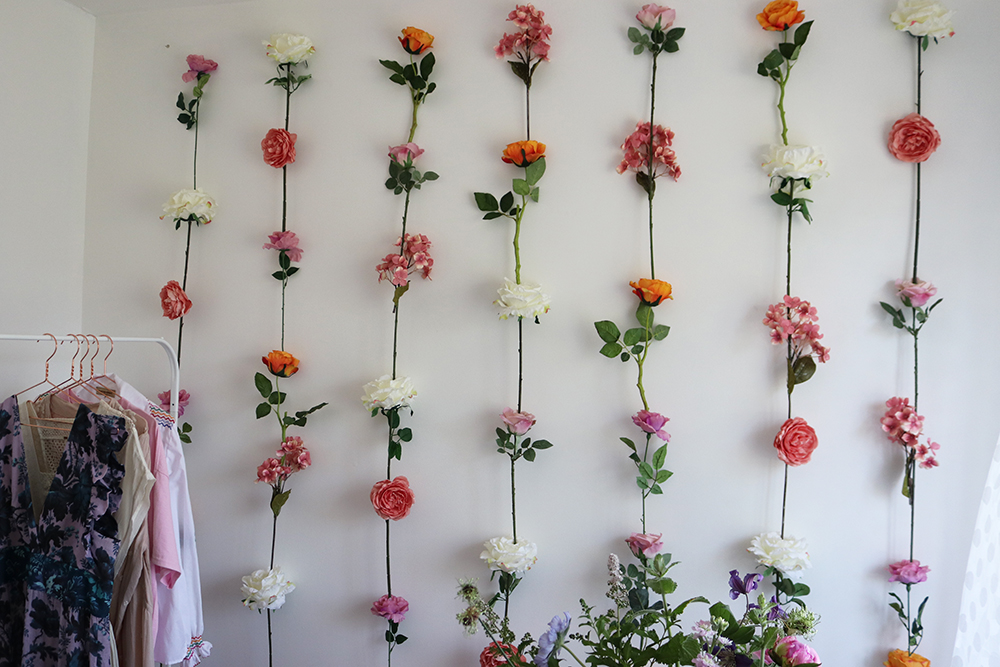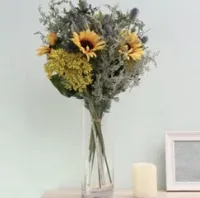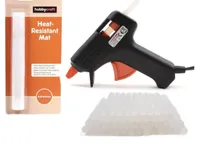This flower wall is an easy DIY hack – and can be made in an afternoon
A flower wall is an easy DIY hack you can complete in just a couple of hours. Plain old walls begone!


This flower wall is our next installment for #NationalDIYWeek. On Monday, we featured a five-day room transformation for under £500; yesterday, it was plant-filled wheelie bin storage and now it's a DIY flower wall by the very colourful Instagrammer @charlottejacklin. A perfect way to jazz up an otherwise plain looking bedroom, spare room, nursery or office, we think.
How? We explain that below. All you need to get started is a glue gun, a range of faux flowers you love, a hammer, some slim nails and some paper clips. You can complete this in an afternoon once you've got the tools to hand. We're rooting for you.
A photo posted by @charlottejacklin on Jun 27, 2018 at 12:00am PDT
HOW TO CREATE A FLOWER WALL
1. The first step in creating your very own flower wall is to source the materials. Charlotte's DIY was a collab with Hobbycraft, so all her flowers are from there (more on that below) and we think they're a fab option.
2. The next step is to find a big area of floor in which you can lay out your flowers so you can be sure the arrangement is pleasing. You'll need to decide how many rows you'd like and how many flowers will be in each row. This is also where you can trim stems and leaves if need be.
3. Once you're happy with the look and order of your flowers, begin gluing them together. Starting from the top of each row, grab your top two flowers and your (now hot) glue gun. First, pop some glue in the head of your second flower. Then quickly pop the bottom of the stem of the top flower into the hot glue – and leave to dry. Continue this process until you have a string for each row.
4. Now hang your flower strings on the wall. You might need two people to do this – one to hang and the other to make sure they're evenly spaced from afar. Simply hammer a nail into your wall where you'd like the top of each row to sit. Then, using a paper clip, attach the row of flowers to the nail, being sure to hide the paperclip behind the head of a flower. And you're done!
Head to Charlotte's blog for the full how-to and comprehensive steps.
WANT TO COPY THIS DIY? HERE'S WHAT YOU NEED
Artificial Flowers | From 60p at Hobbycraft
Hobbycraft is probably the best place to purchase your artificial flowers. Why? Their range is huge and their prices are affordable. Charlotte used a mix of: Coral Foam Peony; Pink Gilt Mountain Hydrangea; White Sorbet Rose Stem; Lavender Rose Stem and Rose Leaves.
Hot Melt Glue Gun | £13 £10 at Hobbycraft
Don't own a glue gun? No worries, this one is only £11 and it comes with lots of sticks as well as a heat proof mat. Bargain.
Get small space home decor ideas, celeb inspiration, DIY tips and more, straight to your inbox!

Hi! I'm Annie, and I'm the Head Ecommerce Editor at Real Homes. I've been part of the Real Homes team since 2018, when I joined as Deals Editor. Along with covering major sales events — from Black Friday to Amazon Prime Day — I review home must-haves so that you can buy with peace of mind. Mostly focusing on home fragrance and sleep, as well as a few vacuum cleaners, I've tested pretty much every item you can think of that you need in your home. I live on the outskirts of the city in a two-bed apartment with my husband and my pug, Doug. So I am always searching for compact alternatives and ways to save floor space. What about when I am not typing away? Well, you'll find me enjoying an iced coffee (no matter the season) and trying out the latest brunch spots the city has to offer, or booking my next holiday. Where else can you find my words? Livingetc, Homes & Gardens, Ideal Home, Gardeningetc, and Woman & Home.

